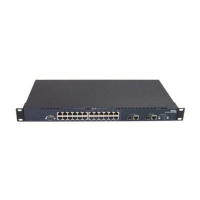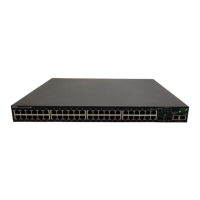BigIron RX Series Configuration Guide 99
53-1002253-01
Configuring RADIUS security
4
RADIUS authentication
When RADIUS authentication takes place, the following events occur.
1. A user attempts to gain access to the BigIron RX by doing one of the following:
• Logging into the device using Telnet, SSH, or the Web management interface
• Entering the Privileged EXEC level or CONFIG level of the CLI
2. The user is prompted for a username and password.
3. The user enters a username and password.
4. The BigIron RX sends a RADIUS Access-Request packet containing the username and
password to the RADIUS server.
5. The RADIUS server validates the BigIron RX using a shared secret (the RADIUS key).
6. The RADIUS server looks up the username in its database.
7. If the username is found in the database, the RADIUS server validates the password.
8. If the password is valid, the RADIUS server sends an Access-Accept packet to the BigIron RX,
authenticating the user. Within the Access-Accept packet are three Brocade vendor-specific
attributes that indicate:
• The privilege level of the user
• A list of commands
• Whether the user is allowed or denied usage of the commands in the list
The last two attributes are used with RADIUS authorization, if configured.
9. The user is authenticated, and the information supplied in the Access-Accept packet for the
user is stored on the BigIron RX. The user is granted the specified privilege level. If you
configure RADIUS authorization, the user is allowed or denied usage of the commands in the
list.
RADIUS authorization
When RADIUS authorization takes place, the following events occur.
1. A user previously authenticated by a RADIUS server enters a command on the BigIron RX.
2. The BigIron RX looks at its configuration to see if the command is at a privilege level that
requires RADIUS command authorization.
3. If the command belongs to a privilege level that requires authorization, the BigIron RX looks at
the list of commands delivered to it in the RADIUS Access-Accept packet when the user was
authenticated. (Along with the command list, an attribute was sent that specifies whether the
user is permitted or denied usage of the commands in the list.)
After RADIUS authentication takes place, the command list resides on the BigIron RX. The
RADIUS server is not consulted again once the user has been authenticated. This means that
any changes made to the user’s command list on the RADIUS server are not reflected until the
next time the user is authenticated by the RADIUS server, and the new command list is sent to
the BigIron RX.

